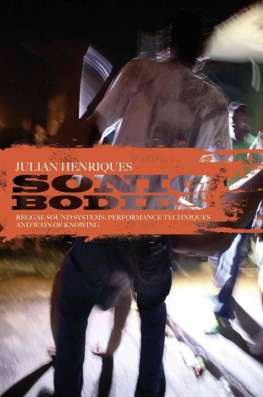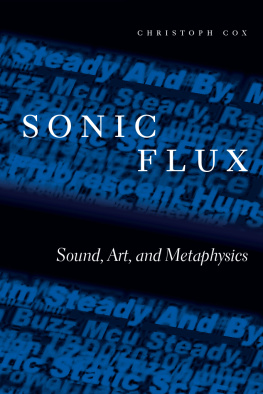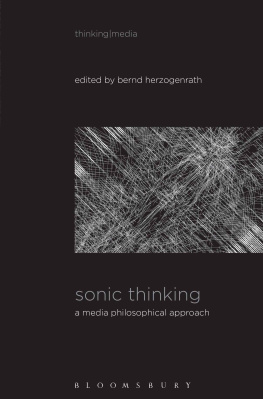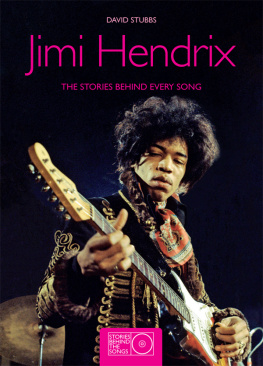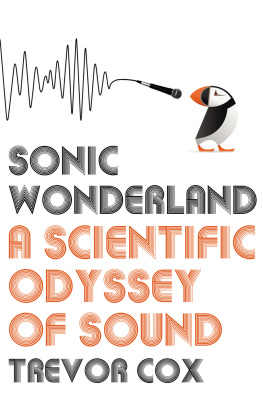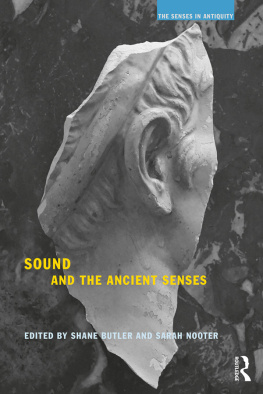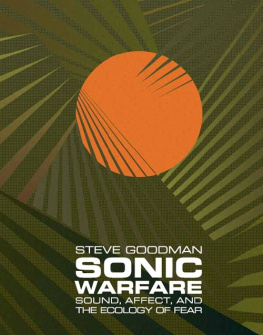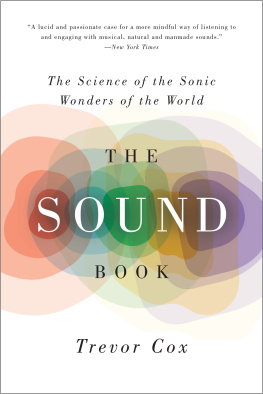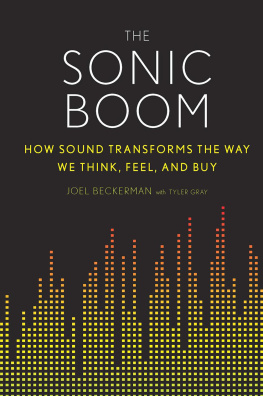
Sonic Bodies
Reggae Sound Systems, Performance Techniques, and Ways of Knowing
By Julian Henriques

The Continuum International Publishing Group
80 Maiden Lane, New York, NY 10038
The Tower Building, 11 York Road, London SE1 7NX
www.continuumbooks.com
2011 by Julian Henriques
All rights reserved. No part of this book may be reproduced, stored in a retrieval system, or transmitted, in any form or by any means, electronic, mechanical, photocopying, recording, or otherwise, without the written permission of the publishers.
Library of Congress Cataloging-in-Publication Data
Henriques, Julian.
Sonic bodies : reggae sound systems, performance techniques, and ways of knowing / by Julian Henriques.
p. cm.
Includes bibliographical references and index.
ISBN-13: 978-1-4411-4429-4 (paperback : alk. paper)
ISBN-10: 1-4411-4429-3 (paperback : alk. paper)
ISBN-13: 978-1-4411-0151-8 (hardcover : alk. paper)
ISBN-10: 1-4411-0151-9 (hardcover : alk. paper) 1. Dancehall (Music)--Jamaica--History and criticism. I. Title.
ML3532.H47 2011
781.646097292--dc22
2011003536
ISBN: 978-1-4411-6346-2
Typeset by Fakenham Prepress Solutions, Fakenham, Norfolk NR21 8NN
Dedication
to my father Fernando Henriques
(19151976)

Frontispiece Erecting the speaker stacks, Skateland.
Contents
Preface
This book started with a single idea, at a particular moment. This was a remark that Stuart Hall made to me over a restaurant supper. Talking about visual arts in the Caribbean, the conversation turned to Jamaica and he said to me something like: You know it is really a sonic culture. A sonic culture, it struck me, as against assuming that culture was automatically visual. That was the seed from which the research and ideas presented here grew, thanks to Stuarts gift. It has grown on the ground of my research interests as a filmmaker, and the knowledge of the Reggae and Dancehall scenes in both the UK and Jamaica this gave me. Some of the BBC documentaries, like Derek Walcott: Poet of the Island , were located in the Caribbean, where I lived and worked from 1996 to 2001. In my short We the Ragamuffin and feature film Babymother , Reggae music and culture played a large part. What I remembered of this work was how, in practice, auditory communication is as meaningful as the visual, representational and discursive forms of expression that are commonly assumed to have the monopoly on meaning. Such sonic cultures encourage the values, qualities and intensities of audition to be given the same weight as the measure, quantities and spread of visual information. It is intended as a step towards understanding the meaning of audition and the sense of sound.
With this concern for subjectivity and knowing, Sonic Bodies returns me to my first research interests in Changing the Subject and the journal Ideology & Consciousness . But I would also like to acknowledge that a major theoretical inspiration for Sonic Bodies comes from the embodied knowing it seeks to understand. In particular the often nuanced, textured and subtle account that dancehall argot and popular Jamaican expressions often provide, have helped me develop an overstanding of the vibes of a sound and the livity of a way of life. Indeed the imaginative resources of Jamaican popular culture in the 1940s religious cults were also central to my fathers social anthropological study, Family and Colour in Jamaica . In any event, thinking through sounding is touched with the experimental spirit of the studio recording practices of versioning and dubbing , where, as its said, every spoil is a style.
Acknowledgements
Those friends and colleagues I would particularly like to thank for their helpful comments and encouragement include Stuart Hall, Les Back, Lisa Blackman, Keith Critchlow, Steve Goodman, David Scott, Tony Bogues, Jeremy Weate, Homi Bhabha, Valerie Walkerdine, Couze Venn and my PhD supervisors Dave Morley and Sara Ahmed; and my examiners Iain Chambers and Keith Negus. Also I would like to thank my interviewees for sharing their knowledge and understanding, particularly the late Ms Louise Frazer-Bennett, Winston Wee-Pow Powell, Horace McNeal, DJ Squeeze, Denton Henry, Vuralado Barnett, Hedley Jones and fellow dancehall researchers Sonjah Stanley-Niaah, Bibi Bakare-Yusuf and Deborah Hickling. Finally, I would also like to thank my wife Parminder Vir and our daughters Mala and Anuradha for all their patience, support and inspiration.
Figures
Frontispiece | Erecting the speaker stacks, Skateland | vi |
1.1. | Stone Love Movement logo on a banner | |
1.2. | Bar on Baker Street, Jones Town, Kingston | |
1.3. | Map of Kingston, uptown and downtown, with the locations of some of the dancehall sessions attended for research | |
1.4. | Quotations from the Gospels on the wall, next to advertisements, Jones Town | |
1.5. | A biblical reference, Prov. 3 vs5, car rear window, Jones Town | |
1.6. | DVD cover for 2005 World Cup clash, New York | |
1.7. | A Kumina Duty, Spanish Town, circa 2000 | |
1.8. | Bashment poster featuring artists, selectors, MCs and videoman | |
1.9. | The middle and inner ear | |
1.10. | Live video screen, dancers and camera (bottom right) Chuchu Benz session, August Town, 2004 | |
1.11. | The material, corporeal and sociocultural wavebands of sounding | |
1.12. | Three dimensions: sound in time, music, and an object in space | |
2.1. | The triangulation of the three elements of propagation | |
2.2. | The wavebands of sounding and the elements of propagation | |
2.3. | Stone Love Movement owner Winston Wee-Pow Powell | |
2.4. | Unloading the speaker boxes, Skateland | |
2.5. | Stone Love engineer Winston stringing up the set | |
2.6. | Running repairs following a breakdown for Stone Love set at the Skateland session | |
2.7. | The instruments and wavebands of the sound system | |
2.8. | The three dimensions of a longitudinal wave as qualities | |
2.9. | The triangulation of wavebands, elements of propagation and features of sound waves | |
3.1. | Horace McNeal, Stone Love Movement chief engineer | |
3.2. | A cabinet-maker at work in Horace McNeals speaker cabinet production workshop, Torrington Avenue, Kingston | |
3.3. | Monitoring controls on DJ Squeezes Skyy [sic] sound system truck, Thunder |
Next page
